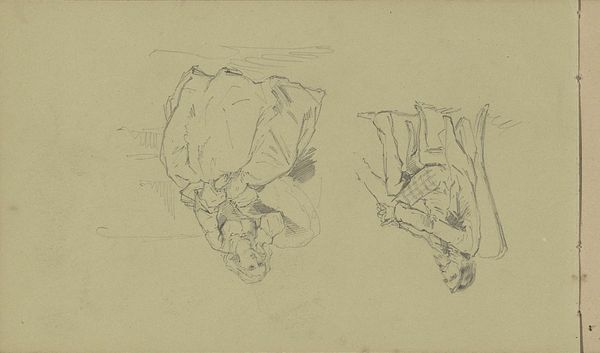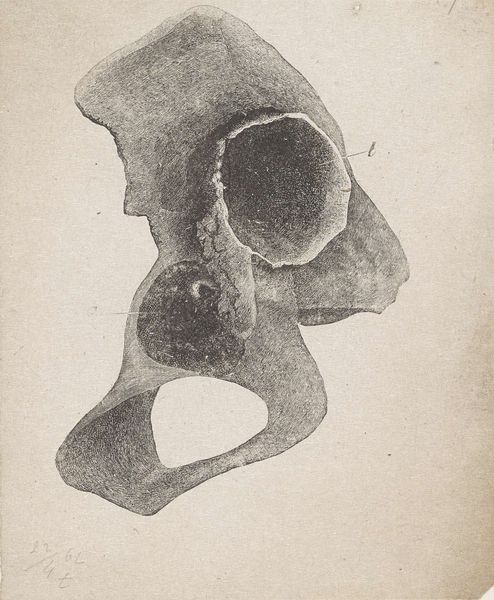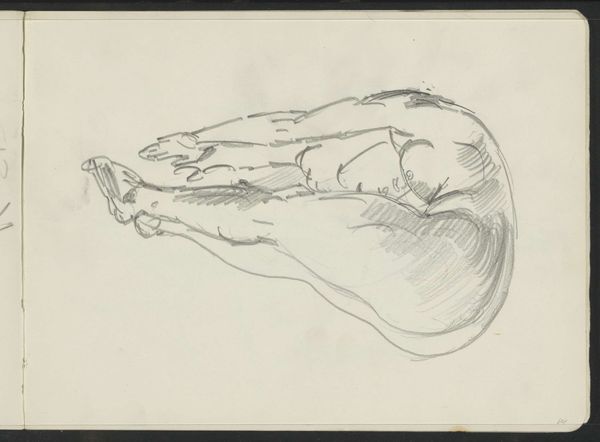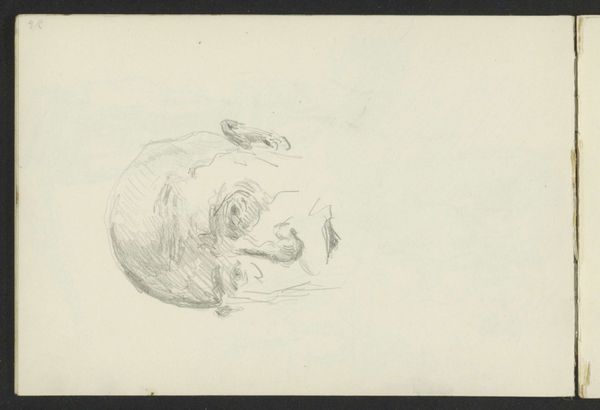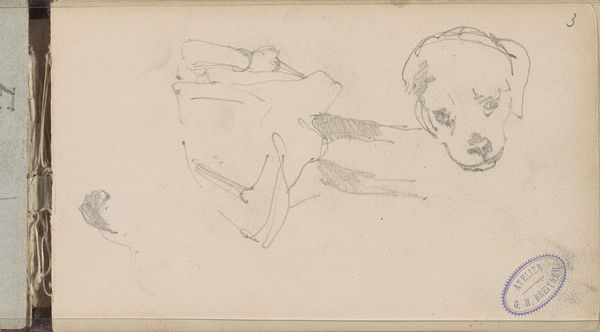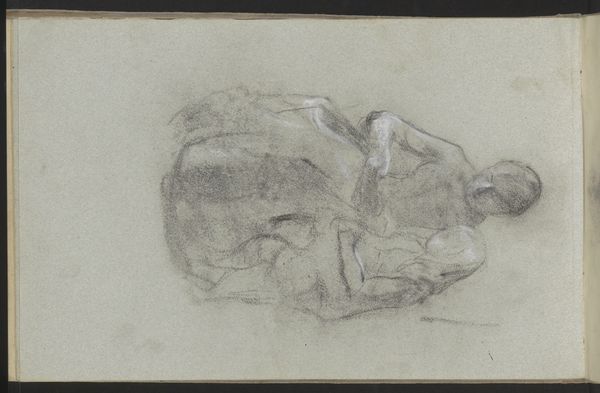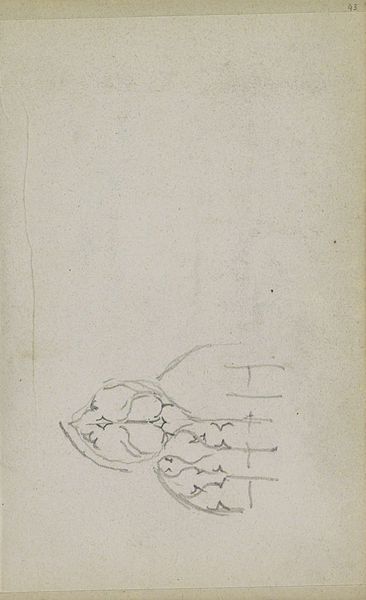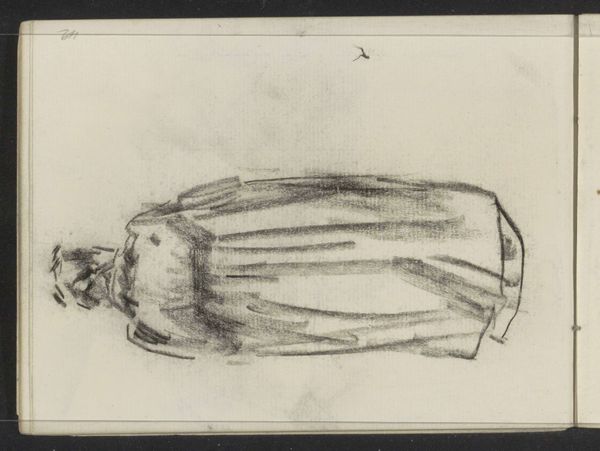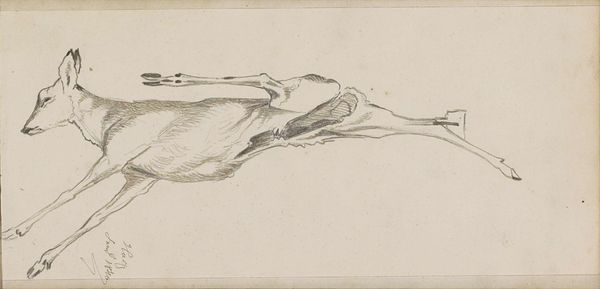
Copyright: Rijks Museum: Open Domain
Curator: Well, what strikes me first is the unusual perspective—it's intimate and a little unsettling, actually. Editor: Unsettling how? It feels private, sure. There’s a vulnerability to viewing a person from this angle. I see a rapid capturing of form in simple pencil strokes, which emphasizes the material constraints of creating during its era. Curator: Indeed. This is "Karel, van bovenaf gezien," or "Karel, Seen From Above," a drawing made around 1892 by Julie de Graag. You can find it here at the Rijksmuseum. I’m wondering about the artist's relationship to the subject. Why this viewpoint? Editor: Consider the labor involved: sourcing the pencil, the paper's texture. And note the artist’s hand, sketching, erasing – decisions revealed through smudges and varied line weights. These are essential, not incidental, aspects of the piece. Curator: I see it as defying conventional portraiture of the period. This isn't some commissioned piece intended to portray power or status. De Graag’s informal impression really humanizes Karel and removes a formal tone of the time. Editor: The angle is also really interesting since it democratizes Karel, by positioning the viewer with him and removing status. It doesn't enshrine, it examines, I think. And if you see the composition within its historic social context, we see that the work goes beyond just paper. The industrial age influenced all disciplines with its advances and materials being used everywhere. Curator: A very good point. The implications for women artists at that time should also be acknowledged since women were stepping into the public sphere in an innovative way during the time this piece was crafted. Editor: Exactly. It’s tempting to get lost in technique. For instance, look at how economical the use of shading is, to render form with such speed but understanding how those new material were impacting all of the disciplines at the time. Curator: Ultimately, it's a refreshingly unpretentious portrayal. De Graag asks us to consider what’s truly important in representing a person, going beyond social performance. Editor: So well said! The constraints actually fueled its power; it challenges perceptions on many levels.
Comments
No comments
Be the first to comment and join the conversation on the ultimate creative platform.
